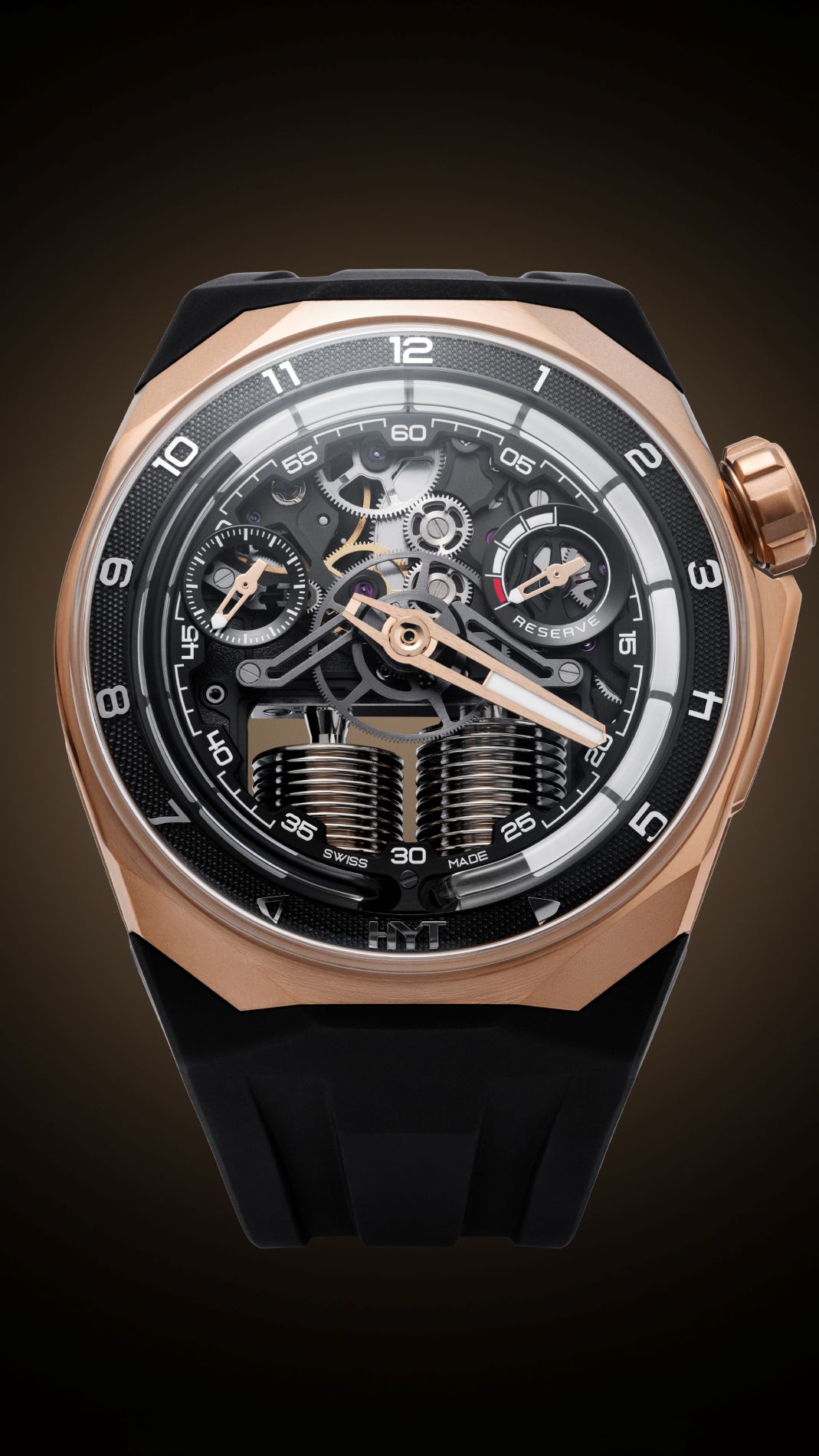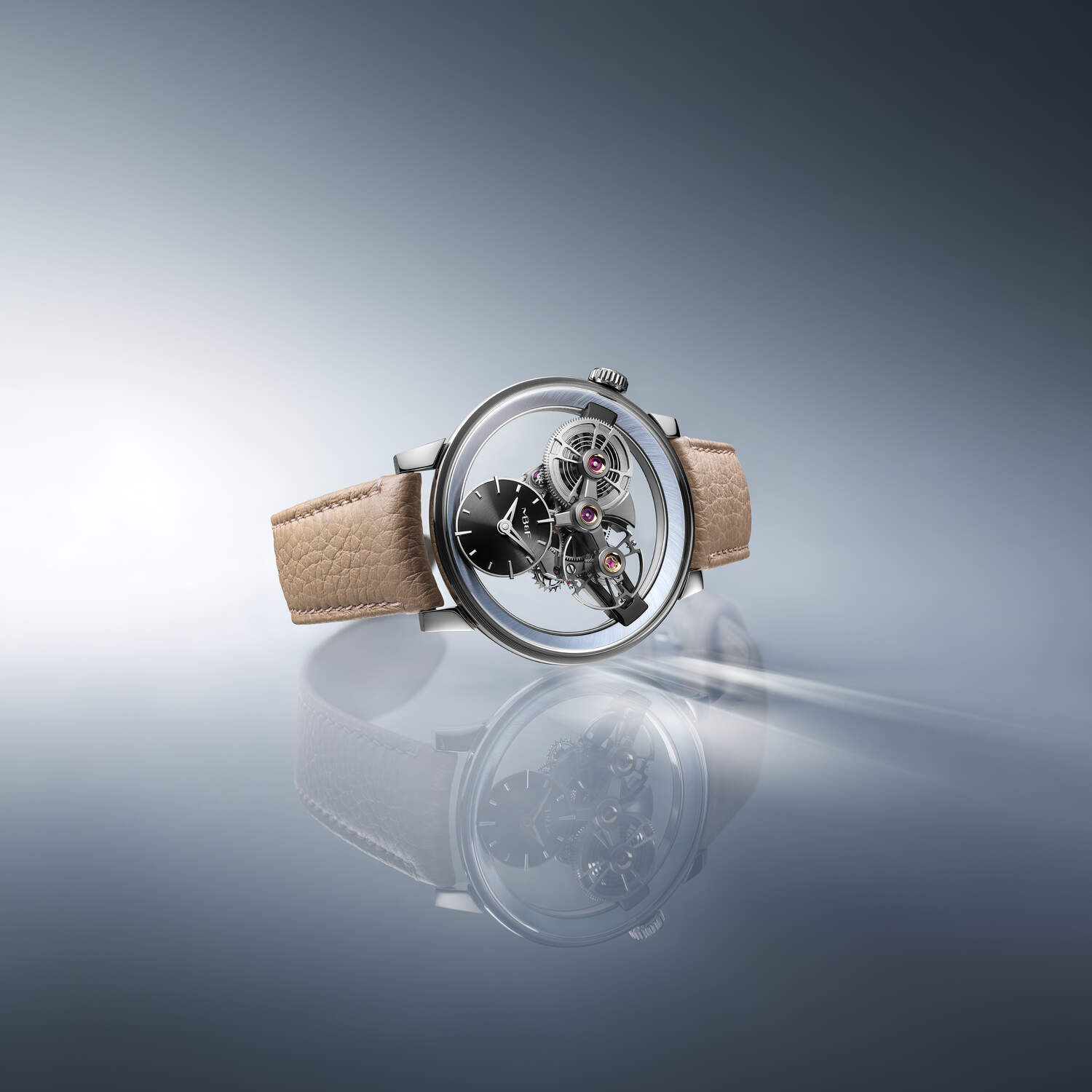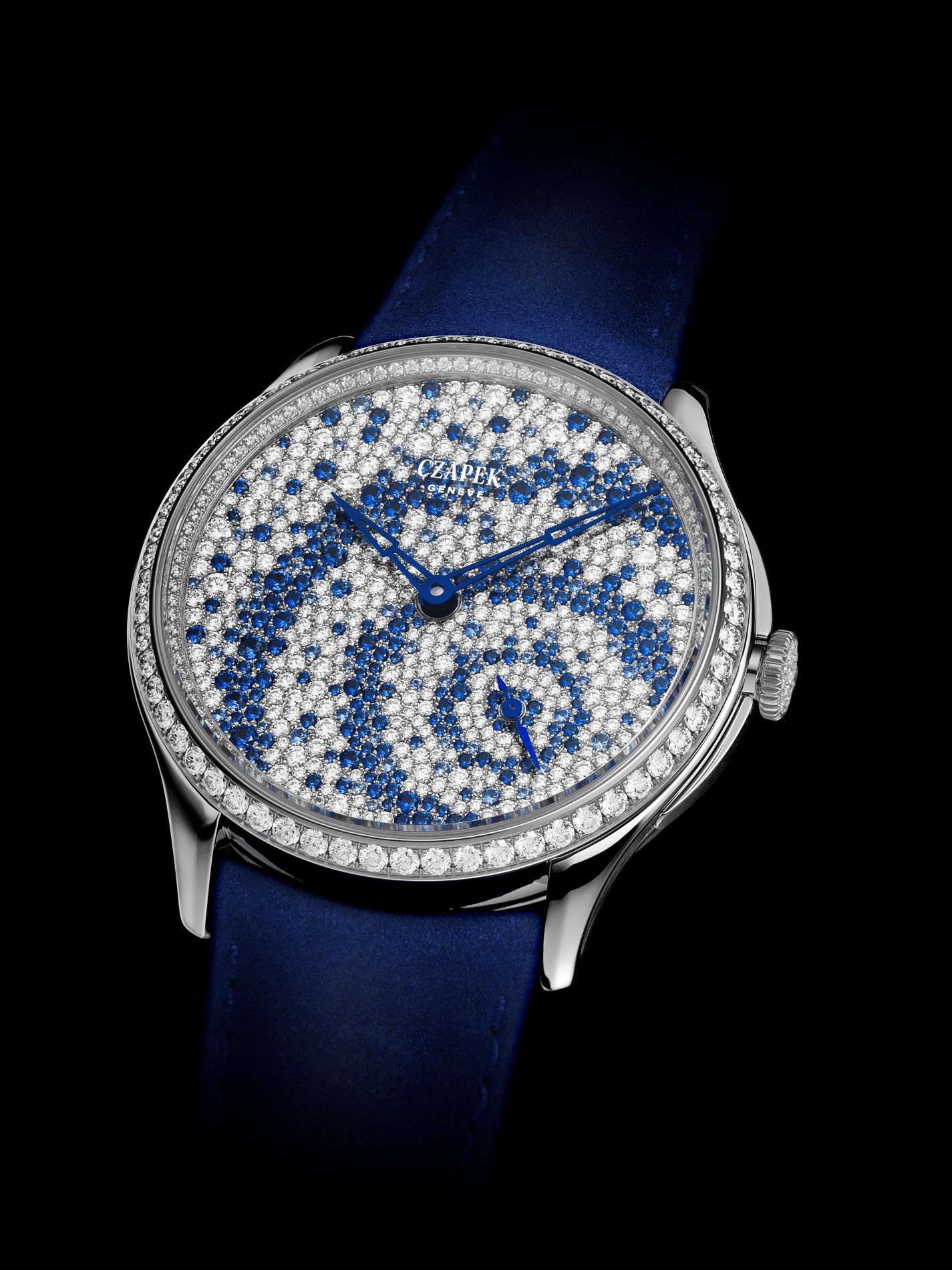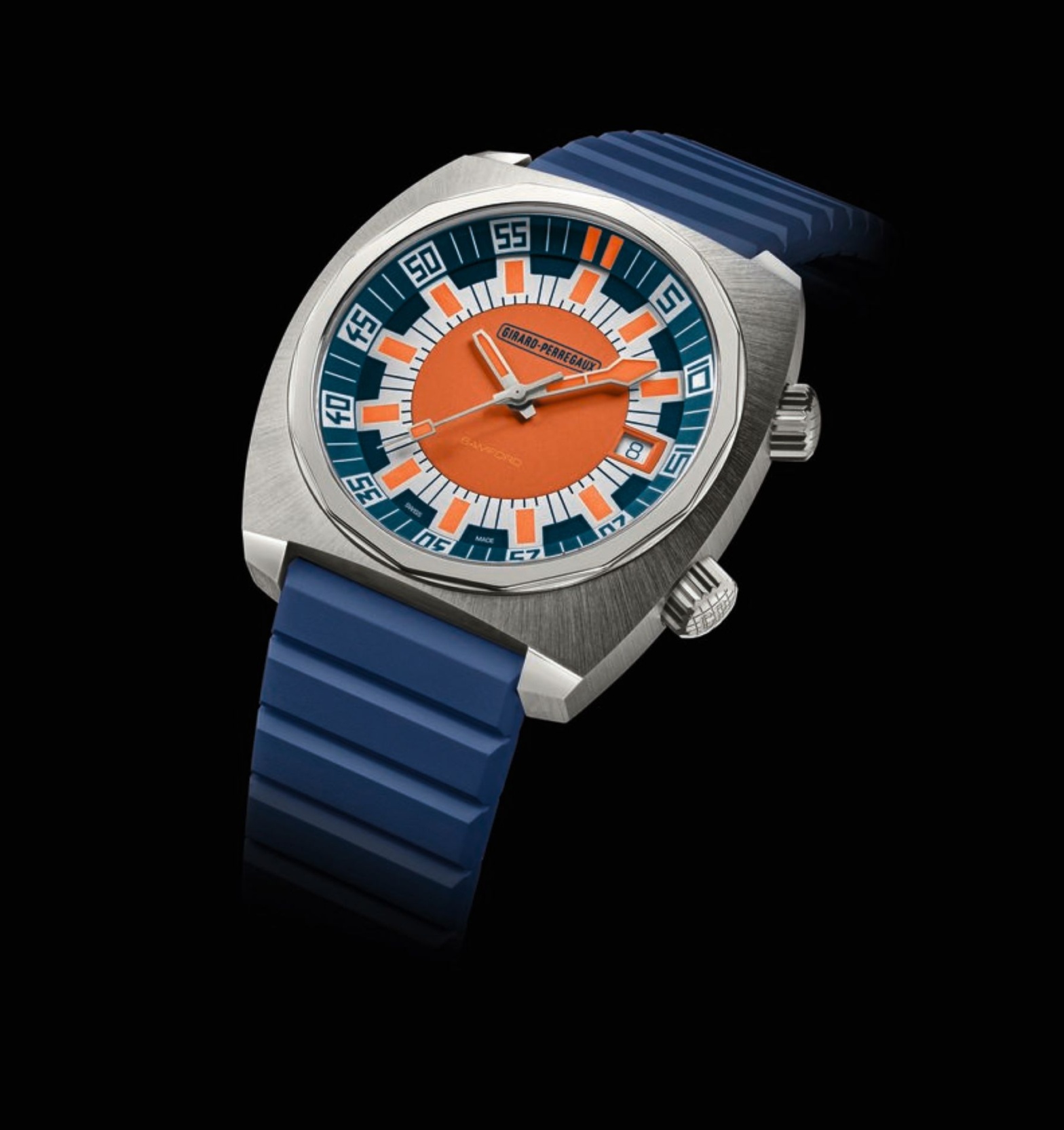Orchestral Horology
A duo, a trio, and a quartet – Bvlgari composes a horological symphony, adding harmonic complexity to its comprehensive range of chiming timepieces. Whether they chime on two, three, or four gongs, repeat the minutes, or automatically ring the hours, the new Octo Roma watches play tritone intervals, created by Bvlgari in collaboration with the Italian-Swiss conductor Lorenzo Viotti.
The Octo Roma Grande Sonnerie Tourbillon and Octo Roma Carillon Tourbillon reinvent Bvlgari’s soundscapes. The musicality of these chiming watches is based on a new musical interval that challenges the canon: the tritone harmonic interval. Applying this unprecedented dissonance in acoustic watches gives them a unique tonal quality. As a brand rooted in Roman culture, in antiquity but also its Baroque period, Bvlgari ventures into a realm that, while not bound by the conventions of musical harmony, forms an integral part of classical music.
Bvlgari’s polyphonic mastery shines through in the recital-worthy mechanical ensembles housed in the iconic Octo Roma case, the reference for Bvlgari’s grand complications. Complementing the two aforementioned chiming timepieces, Bvlgari reintroduces the Octo Finissimo Minute Repeater in full carbon, a high-tech musical instrument that holds the record as the thinnest chiming watch ever created.
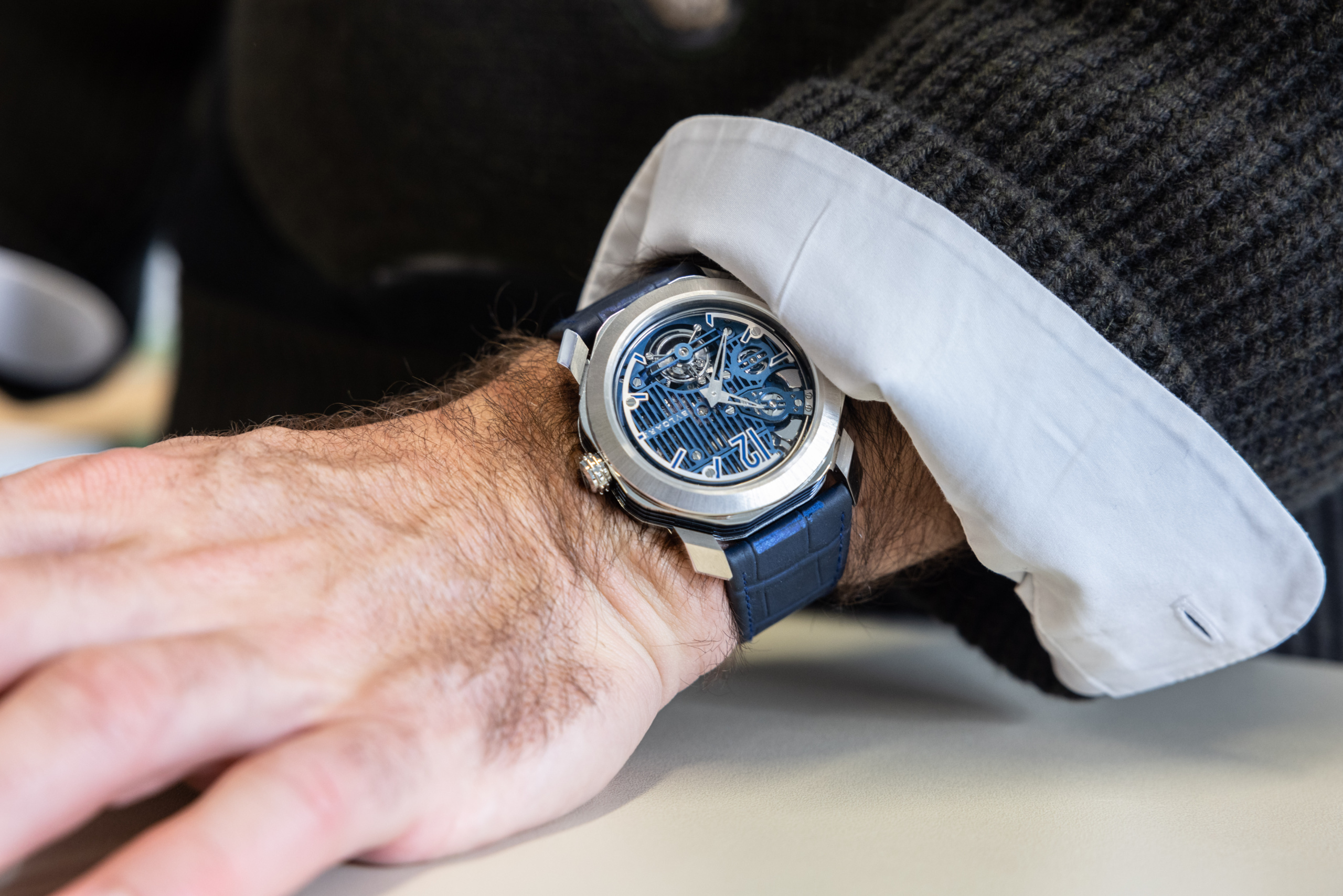
Repertoire
Bvlgari’s expertise in horological acoustics is unmatched. The brand stands alone in consistently producing all three types of chiming wristwatches in series, and its comprehensive repertoire is built on the exceptional skills of expert watchmakers in this rarefied domain. According to Antoine Pin, Managing Director of Bvlgari Watches, “It’s an incredible opportunity to showcase the exceptional creativity of our teams in the realm of sound. Indeed, our technical teams have created this opportunity by developing extraordinary expertise in horological acoustics, an expertise that fills us with immense pride.”
With a minute repeater on two tones, a carillon on three, and a grande and petite sonnerie on four tones, the Bvlgari Manufacture in Le Sentier masters the gamut of chiming horological instruments. In grande sonnerie mode, the BVV 800 calibre of the Octo Roma Grande Sonnerie Tourbillon automatically chimes the hours and quarters as they pass and repeats the hour every hour. It can also repeat the hours, quarters, and minutes on demand. As a grande sonnerie, it chimes the quarters with its four gongs and hammers.
The Octo Roma Carillon Tourbillon chimes the hours, quarters, and minutes, striking the quarters on three notes thanks to the modified BVL428 calibre carillon. In 2016, Bvlgari introduced the world’s thinnest minute repeater, which chimes on two notes with a record-setting movement thickness of just 3.12 mm. At the end of 2024, Bvlgari will be reissuing these three striking mechanisms, instruments of musical horology, in a recital of chamber music… for the wrist.
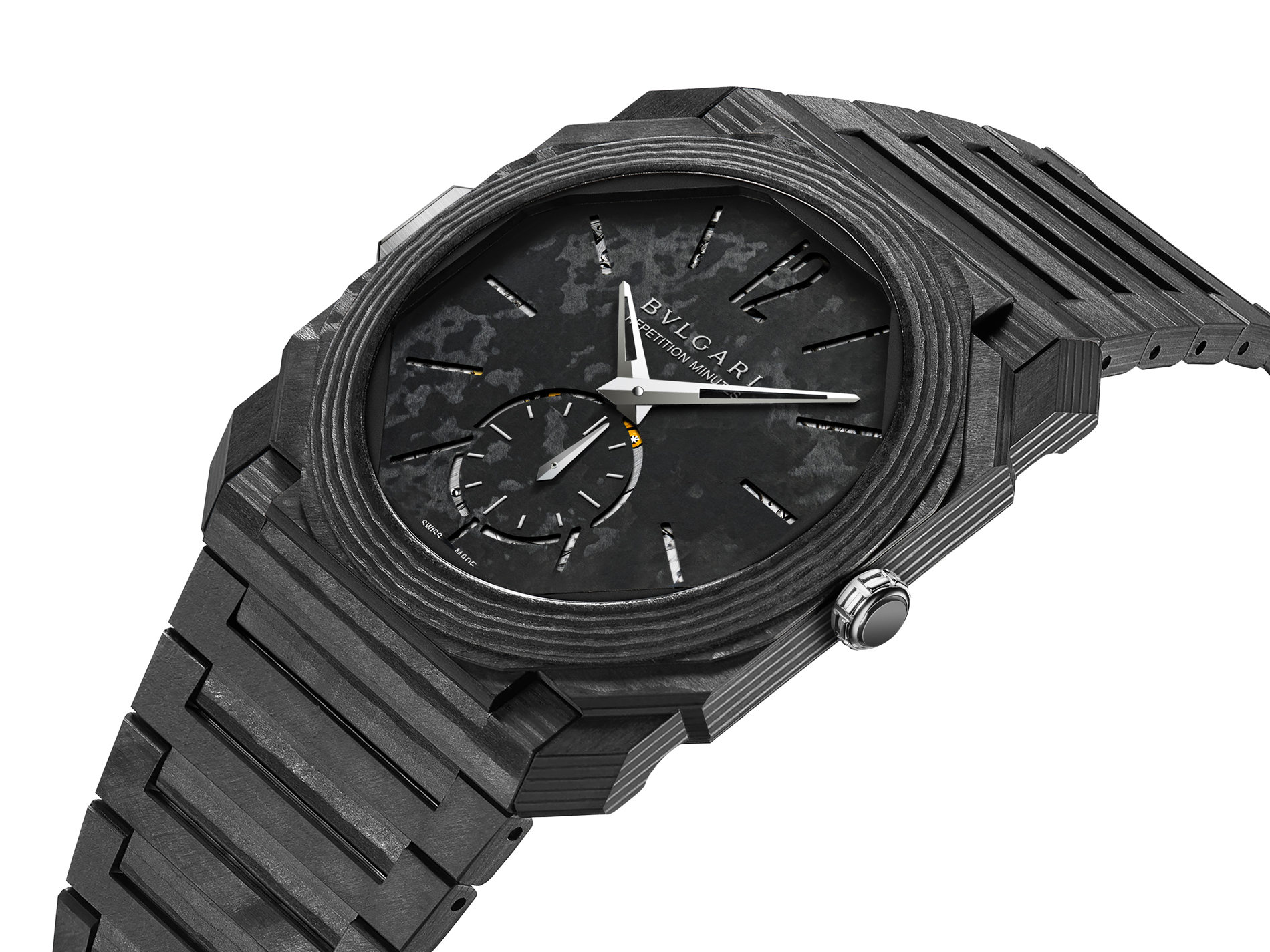
Tonality
The theme of this new opus is the tritone, an interval with a notorious role in music history, also known as the augmented fourth or the diminished fifth. This creative and disruptive take on the tonal scale is the result of the collaboration between Bvlgari and conductor Lorenzo Viotti. At just 34 years old, this Lausanne native currently leads the Netherlands Philharmonic Orchestra, the Netherlands Chamber Orchestra, and the Dutch National Opera. “The tritone, often referred to as the ‘Devil’s Interval,’ spans six semitones or three whole tones,” explains Lorenzo Viotti. “It divides the octave in half and brings dissonance and tension.”
While everything in the design of the Octo Roma Grande Sonnerie Tourbillon and Octo Roma Carillon Tourbillon is harmonious and composed with careful symmetry, their distinctive soundscape creates an intriguing aural contrast. “The purpose of this combination of notes is primarily the dissonance, the tension created by the tritone,” explains Lorenzo Viotti. “It strongly contrasts with the modern preference for consonant harmonic intervals. In medieval symbolism, certain chords were linked to spiritual concepts. The tritone was considered disturbing, and due to its asymmetry, contrary to the religious canon of reflecting divine harmony – hence the nickname associating it with the devil’s workings.”

Disruptive Harmony
The tritone introduces a disruption in the musical phrase, a dramatic tension embraced by countless composers from Gesualdo to John Coltrane, from Stravinsky to Metallica. Breaking with the classical consensus of horological musicality, Bvlgari invents a new register with the technical and artistic collaboration of a musical prodigy. Even the four notes of its Grande Sonnerie, previously set to the Big Ben chime, eschew the sacrosanct Westminster tones. Its quarter-hour chimes are sounded on four unfamiliar, intriguing, and unique notes. As a way of prompting the wearer to pay attention and count the strikes, the dissonant tritone sound creates an alertness that perfectly aligns with the nature of a watch that tells time audibly.
Just as violins and pianos have long transcended their wooden origins to incorporate more technical and radical materials, Bvlgari has taken its chiming watches into new material realms. The Octo Roma Grande Sonnerie Tourbillon is crafted from titanium, the Octo Roma Carillon Tourbillon from rose gold, and the Octo Finissimo Minute Repeater from multi-layered CTP (Carbon Thin Ply), which is both ultra-lightweight and rigid. The ability to resonate and extract the rich tonal nuances of major and minor chords from these three materials is just one aspect of the versatility that has been achieved. Just as Lorenzo Viotti artfully conducts Brahms, Wagner, or Dvořák, Bvlgari masters the interplay of materials, techniques, and emotions into a sound that is now its signature.


